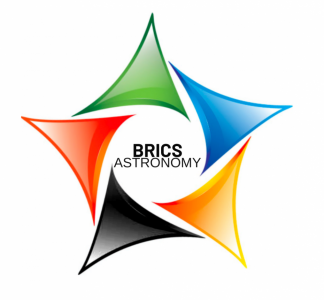
Amongst the first astronomical observatory established
was the St. Petersburg observatory, today known as the Pulkovo astronomical observatory. Other observatories were later in founded; Moscow , St. Petersburg, Kazan and other states.
 Russian astronomy is divided between academic institutes/observatories and universities. Modern Russia has about 60 astronomical observatories, over a thousand professional astronomers and the number of graduate students is still on the raise.
Russian astronomy is divided between academic institutes/observatories and universities. Modern Russia has about 60 astronomical observatories, over a thousand professional astronomers and the number of graduate students is still on the raise.
Astronomy Institutes:
Institute for Applied Astronomy of the Russian Academy of Sciences (IAA RAS) : Specialising in Radio VLBI observations.
The IAA RAS is one of the world’s largest astronomical institutions, carrying out research activities in geodynamics, ephemeris astronomy, classical and relativistic celestial mechanics, radio astronomy and radio interferometry, space geodesy, and fundamental positioning and timing services.
Institute for Solar-Terrestial Physics: Optical-Solar, IR and radio telescopes.
- Observatories:
- Baikal Astrophysical observatory
- Sayan Solar Observatory
- Radio Astronomical Observatory, Siberian Solar Radio telescope (SSRT)
- Research Areas:
- Solar Physics
- Near-Earth Space Physics
- Asteroids and Comet impact hazards
Space Research Institute: Optical, radio and Spaceborne instruments
- Research Fields:
- Astrophysics (Radio and high energy astrophysics)
- Space plasma physics
- Planetary and solar system research
- Earth remote sensing
- Space engineering
Astro-Space Center of P.N. Lebedev Physical Institute: Radio and Spaceborne devices.
- Performs fundamental research in the field of astrophysics, including cosmology, the structure and evolution of astronomical objects, interstellar and interplanetary space.
Institute of Astronomy (INASAN): Optical
- Research Fields:
- Stellar Atmospheres
- Stellar evolution
- Stellar gravity
- Astrometry, geodynamics and geophysics
- Artificial and natural celestial bodies
- Space research
- Asteroid and comet hazard
Special Astrophysical Observatory: Optical and radio
-
- Instruments:
- BTA (Bolshoi Teleskop Azimutal’ny)
- Zeiss-1000
- RATAN-600
- Research Fields:
- Cosmology: cosmic microwave background, early Universe
- Galaxies: kinematics and dynamics, AGN, chemical composition, Local group
- Interstellar medium
- Stars: evolution and chemical composition, magnetic fields, multiple star systems, pulsars
- Gamma-busters
- The Sun (in the radio range)
- Methods and tools for astrophysical research
- Instruments:
Main Astronomical Observatory ( Pulkovo astronomical observatory): Optical, IR and Radio
-
- Instruments:
- AZT-24
- BPR (The Large Pulkovo Radio Telescope)
- Research Fields:
- Improvement of the International Celestial Reference Frame (ICRF).
- Computation and analysis of the Earth rotation parameters (EOP).
- Modelling of the Celestial pole offset (CPO) free core nutation (FCN).
- Comparison of VLBI products with other space geodesy techniques.
- Observation statistics.
- Instruments:
Universities with Astronomy Departments:
- M.V. Lomonosov Moscow State University
- Saint Petersburg State University
- Kazan Federal University
- Ural Federal University (Hosts of the 2016 BRICS Astronomy workshop and working group meetings.)
Multilateral cooperative research
The Foundation for Assistance to Small Innovative Enterprises (FASIE) , the Ministry of Education and Science (MON) and the Russian Foundation for Basic Research (RFBR) are part of the initiative to fund multilat
, the Ministry of Education and Science (MON) and the Russian Foundation for Basic Research (RFBR) are part of the initiative to fund multilat eral cooperative research activities amongst BRICS countries.
eral cooperative research activities amongst BRICS countries.

-
Mission of the BRICS Astronomy Working Group
-
The mission of the BRICS Astronomy Working Group is to promote cooperation between BRICS member countries in the field of astronomy and enabling technologies through joint activities of government, universities, research institutions, and industry, as relevant, to develop astronomical sciences, generate new knowledge, train human capital, develop new technologies and applications, and improve public understanding of science.
